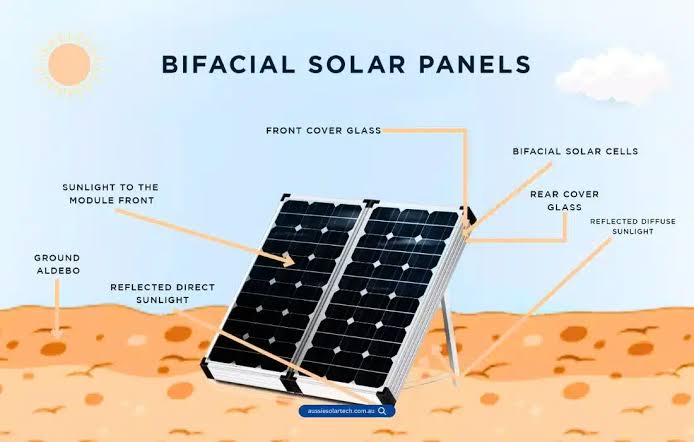If you’ve been researching solar panels, you’ve likely come across a lot of unfamiliar terms. Words like monocrystalline, polycrystalline, PERC, and bifacial can make you feel like you’re hearing a completely different language. However, once you understand these kinds of industry terms, you can get a better understanding of the kinds of panels you’re looking at and which ones are right for you. Keep reading to learn what “bifacial” means in the solar power industry, and how it impacts the performance of your solar panels.
What Does It Mean?
You can probably discern from the word itself that “bifacial” means, more or less, “two faces.” While a two-faced friend is something you want to avoid, a bifacial solar panel is actually a great thing. Unlike traditional solar panels, bifacial solar panels can absorb sunlight from both the front and rear sides of the panel. This allows for increased energy production, particularly in installations where reflected sunlight (or “albedo light” as it can be called in the solar industry) is plentiful.
How Bifacial Technology Works
Bifacial solar panels are built with transparent or semi-transparent backsheets, which allow light to pass through the panel. The light that passes through reflects off surfaces like concrete or light-colored roofing and onto the back side of the solar cells. The rear-facing solar cells can then capture this reflected light and convert it into additional electricity, while a standard solar panel would simply let that light escape capture.
Of course, this technology isn’t suitable for every solar panel installation. You would obviously get the most out of this design if your system is mounted on a somewhat reflective surface; you would also need a raised racking system that would allow light to bounce back underneath the panel without creating excessive shading itself. In the right systems, however, a bifacial panel can drastically increase production.
Benefits of Bifacial Panels
The primary appeal of bifacial solar panels is increased energy production. Depending on the installation and configuration of your system, bifacial panels can produce 10% to 30% more energy than traditional solar panels. This efficiency boost means a higher return on your investment, especially in larger solar power installations like commercial, industrial, and utility-scale setups.
Additionally, bifacial panels often have a longer lifespan and better warranty than traditional designs. This is because they tend to be built with more durable materials that provide better protection against weather and physical stress.
Are They Right for You?
While bifacial panels can have huge efficiency benefits, they’re not usually the best choice for residential systems. This is primarily because residential systems are typically mounted to a dark-colored roof, which doesn’t allow for much light reflection, and usually isn’t compatible with very raised racking. This minimizes the opportunity for the rear-facing cells to capture light. However, if you’re designing a solar array that’s mounted over a reflective surface and can accommodate raised racking, bifacial Phono Solar panels for sale can provide significant increases in energy production.
